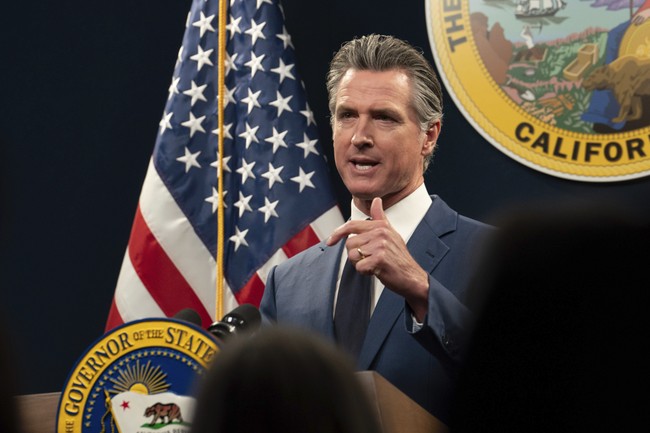Record High: 76 Million Displaced Globally in 2023
The world witnesses an unparalleled surge in internal displacement, with conflicts and natural disasters pushing the number of IDPs past 75 million in 2023.
Published May 18, 2024 - 00:05am
:quality(70)/cloudfront-eu-central-1.images.arcpublishing.com/irishtimes/SV5HVQWI7BV6H65746THQB7QAM.jpg)
Image recovered from irishtimes.com
More than 68 million people were forced to flee their homes due to conflict by the end of 2023, setting a grim record since such data first became available 15 years ago. An additional 7.7 million were displaced by natural disasters, raising the total number of internally displaced people (IDPs) to a staggering 75.9 million, as reported by the Internal Displacement Monitoring Centre (IDMC).
This alarming increase is attributed to new and continuing conflicts that prevent citizens from returning to their homes. The IDMC, a branch of the Norwegian Refugee Council, highlights the complexity of internal displacement, noting that individuals are often unable to restart their lives or reintegrate into society as before.
Sub-Saharan Africa experienced a notable rise in IDPs, with figures more than doubling from 16.5 million in 2018 to 34.8 million in 2023. Sudan alone accounted for 45% of the new displacements in the region, reaching 9.1 million IDPs due to violence that erupted last April. The Democratic Republic of the Congo, beleaguered by M23 rebel resurgence, saw its IDP numbers rise to 6.7 million.
Despite slowdowns in conflict and even truces, countries like Syria and Yemen have seen persistent displacement figures, emphasizing the need for long-term support and solutions for IDPs. The challenge extends to regions experiencing multiple displacements, like in Gaza, where individuals faced repeated movements within a year.
An urgent call is made for enhanced protection and assistance to address the protracted nature of internal displacement. As cited by Jan Egeland, secretary general of the Norwegian Refugee Council, the record displacement numbers serve as a 'damning verdict on the failures of conflict prevention and peacemaking.'
The staggering global displacement crisis continues to escalate, with individuals and families finding themselves trapped in a cycle of fleeing and attempting to return, only to be displaced once again. The phenomenon of repeated displacement is particularly prevalent in the Middle East, where the Syrian Civil War, now in its twelfth year, and the ongoing conflict in Yemen have created a state of perpetual instability. The United Nations High Commissioner for Refugees (UNHCR) reports that a substantial number of the 6.6 million Syrian refugees remain unable to return to their homeland safely, their neighborhoods in ruins and the specter of violence still looming. In Yemen, where the conflict has been labeled as the world's worst humanitarian crisis, displacement is compounded by dire food insecurity and the collapse of public services.
Across the globe, in South Asia, Bangladesh has been grappling with the prolonged presence of nearly 1 million Rohingya refugees who fled from neighboring Myanmar following the military crackdown in 2017. The impasse affecting long-term solutions for the Rohingya underscores a significant global issue: the lack of political will to address the root causes of displacement and to find durable resolutions that enable safe, voluntary repatriation or integration into host communities.
In the face of these daunting numbers, humanitarian agencies are stretching their resources thin. The United Nations and other international organizations urgently request funding to provide vital services, including shelter, food, healthcare, and education. However, the traditional humanitarian response system is overwhelmed, with funding shortfalls leading to reduced aid for the most vulnerable. Innovative strategies are being explored to bridge the gap, including increased investment in disaster risk reduction, climate change adaptation measures, and the development of locally-led response initiatives that empower affected communities.
The rise in internal displacements also underscores the urgent need for policy frameworks that address IDP rights and assistance. National governments are being called upon to adhere to international frameworks such as the Guiding Principles on Internal Displacement and to bolster their own legal and institutional mechanisms for protecting the rights of displaced individuals. Civil society organizations are advocating for heightened attention to the issue at the international level, pushing for it to be recognized as a global priority on par with other pressing challenges like climate change and pandemics.
Recently, increased attention has been paid to climate-induced displacement. Experts from the field of climate science have pointed out that the increasing frequency and severity of extreme weather events are likely to exacerbate the situation of IDPs. In Bangladesh, for instance, devastating floods and cyclones have periodically forced populations to abandon their homes and livelihoods. The overlap of conflicts and natural disasters complicates displacement patterns, requiring multi-dimensional approaches to aid and protect those affected.
As displacement crises become more protracted, there are growing appeals for development-based approaches alongside humanitarian aid. Organizations like the World Bank and various regional development banks are promoting the inclusion of displaced populations in the broader development agenda, advocating for education and employment opportunities that could lead to self-reliance and eventually, social and economic inclusion.
For those who have been displaced, the journey is marked not only by loss, but also by resilience. Communities show remarkable strength in rebuilding their lives, often in new surroundings. Stories of displaced individuals starting businesses, continuing their education, and contributing to local economies are testaments to human endurance. However, without systemic change and increased support, the prospects of millions remain precarious.
Egeland's sobering reflection on the inadequate response to increasing IDP numbers is echoed by humanitarian and international organizations worldwide. The 2023 displacement figures are a clear signal that the international community must act decisively to prevent displacement, protect the displaced, and invest in solutions that address the long-term needs of IDPs. The collective effort to resolve the displacement crisis will not only reduce suffering but can also contribute to greater global stability and prosperity.








